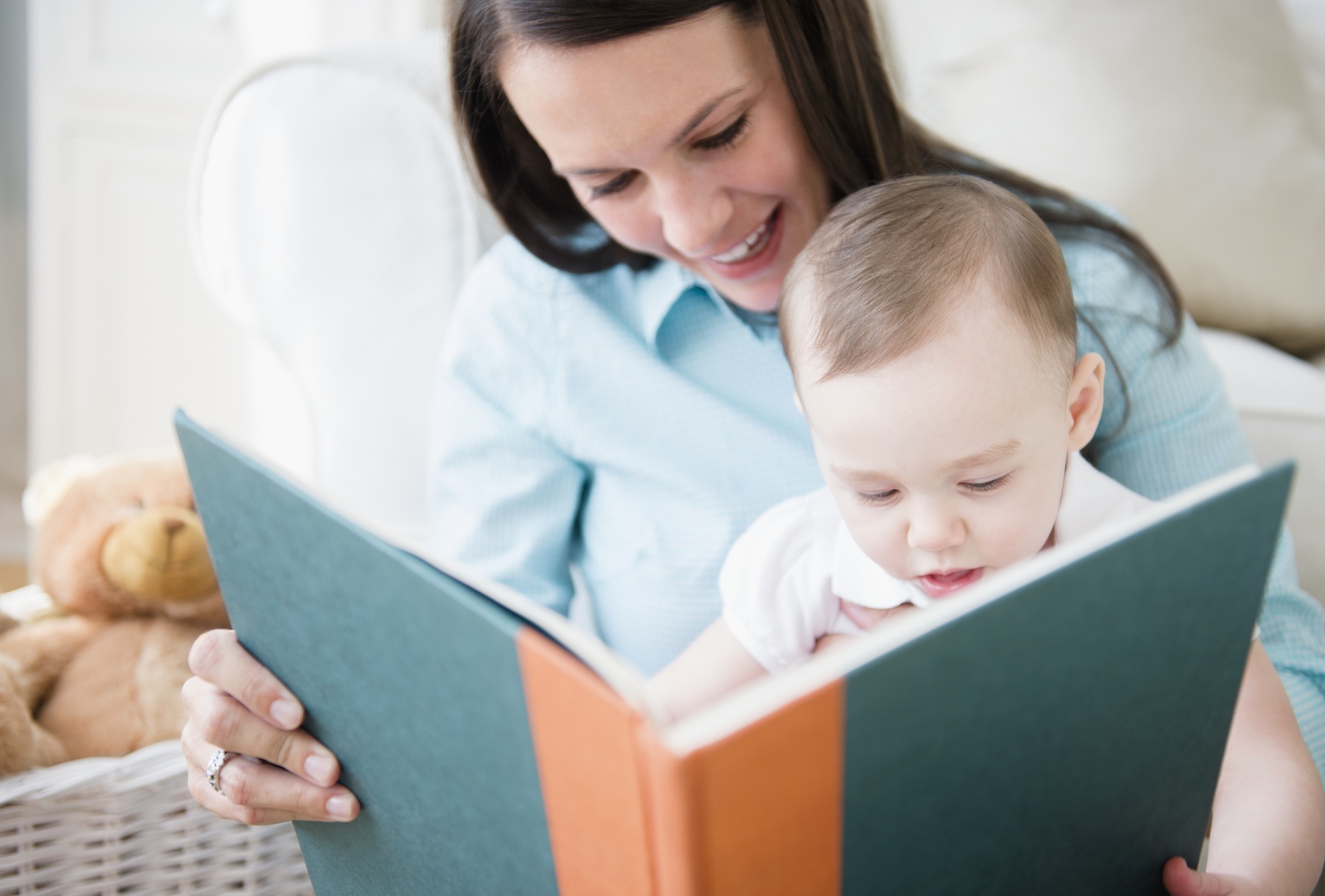
When her son was very small, Dr. Pamela High noticed something funny: she would come home and find the babysitter in the rocking chair with the boy, reading out loud from whatever book she happened to be working on herself at that moment. As her son got older and began to respond more to the words themselves, the babysitter switched to reading children’s books — but the image made an impression on his mother.
Now her son is grown up and High is the lead author of a new policy paper released by the American Academy of Pediatrics that recommends pediatricians advise parents to read aloud to young children “beginning in infancy,” to encourage word learning, literacy and positive family relationships. The report notes that reading to children is correlated with family income level — and, as the New York Times reports, Scholastic is donating 500,000 books to the literacy advocacy group Reach Out and Read, which works with pediatricians to get books to low-income families — but even in families that make 400% of the poverty threshold only 60% of children are read to daily.
But what exactly should they be reading? If your one-day-old baby doesn’t understand the words, does it even matter?
“I don’t think that there’s a huge amount of information on that,” High tells TIME, noting that her own experience with the sitter reading to her son is just an anecdote, not research. “The research is primarily about reading children’s books.”
Part of the issue is that it’s hard to measure understanding, to say that at some number of months of age it begins to be important that you’re not reading a kid something totally inappropriate like 50 Shades of Grey. Language is acquired gradually, and High says that she’s personally seen evidence of understanding even before the 1-year marker at which most children can point to pictures that correspond with spoken words. Plus, she says, “I think [babies] understand the emotion in the words that are being read to them very, very early.”
But there are some things that parents should keep in mind, she says. For example, it’s developmentally appropriate for children to chew on books, so you shouldn’t read to a baby from a valuable and rare manuscript. Colorful illustrations can help keep a child’s attention, but even so you shouldn’t expect a very young infant to concentrate on the book for longer than about 90 seconds. And finally, it’s important that the parent not think the book is annoying. “It starts with the parent’s enjoyment and then becomes a shared enjoyment,” High says.
With that in mind — chewability, enjoyability and calm or positive emotions — here are a few books parents might consider reading aloud to their newborns:
For actual newborns: Can’t & Won’t by Lydia Davis. This short story collection, which came out in April, is a book for grown-ups, by Man Booker International Prize- and MacArthur grant-winner Davis. But it’s great for tiny babies because the short stories are, in some cases, very short. If your kid doesn’t understand the words yet and you can only sneak in a minute of reading a day, and it’s perhaps a minute out of the precious few moments of “me time” you have, you can get up to date on a buzz-worthy literary release. Plus, if the baby’s too young to do too much damage to the book, investing in a hardcover isn’t such a risk.
For slightly older babies who will one day get English degrees: Shakespeare’s Sonnets. Because emotion is more important than content, a nice big collection of lovey-dovey poems that take about a minute to read is perfect. As High points out, reading is often used to help a baby wind down at the end of the day, and the regular rhythm of a rhyming sonnet can’t hurt. If the baby can’t understand Shakespearean words, that’s no big deal; if a word or two does sneak into her brain, there’s nothing inappropriate to worry about.
For kids old enough to touch the book: Farm by James Brown. This picture book made the 2014 Best Books for Babies list, an annual list put together by the Carnegie Library of Pittsburgh, the Pittsburgh Association for the Education of Young Children and the Fred Rogers Company (as in, Mr. Fred Rogers). The selection committee commended the author for his use of interesting textures to “add tactile appeal” to the book.
For kids who are already growing up too fast: The Poky Little Puppy by Janette Sebring Lowrey. The classic tale of a lollygagging dog was once ranked by Publishers Weekly as the top-selling children’s book ever, having sold nearly 15 million hardcover copies between 1942 and 2000. That means parents are likely to remember reading it themselves. Help your infant’s future literacy and reminisce about your own childhood, all in one place.
For kids old enough to laugh : Toot! by Leslie Patricelli. Yes, this book is about farts — but it was also, just today, named Amazon’s top book of the year so far for babies age 0–2.
More Must-Reads From TIME
- The 100 Most Influential People of 2024
- The Revolution of Yulia Navalnaya
- 6 Compliments That Land Every Time
- What's the Deal With the Bitcoin Halving?
- If You're Dating Right Now , You're Brave: Column
- The AI That Could Heal a Divided Internet
- Fallout Is a Brilliant Model for the Future of Video Game Adaptations
- Want Weekly Recs on What to Watch, Read, and More? Sign Up for Worth Your Time
Write to Lily Rothman at lily.rothman@time.com